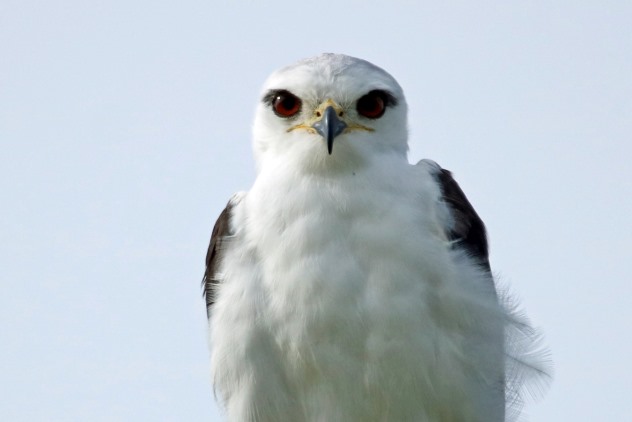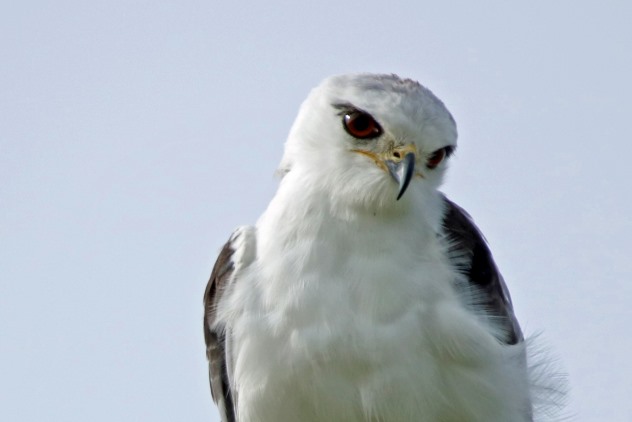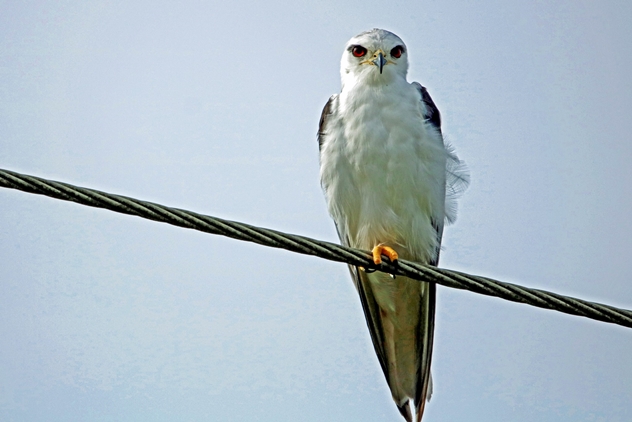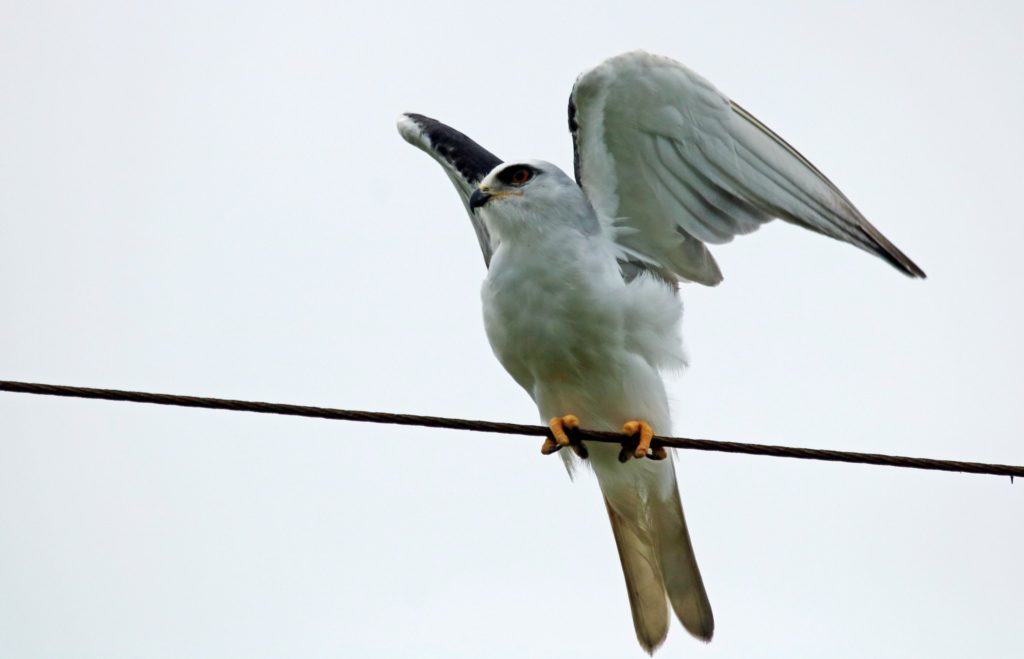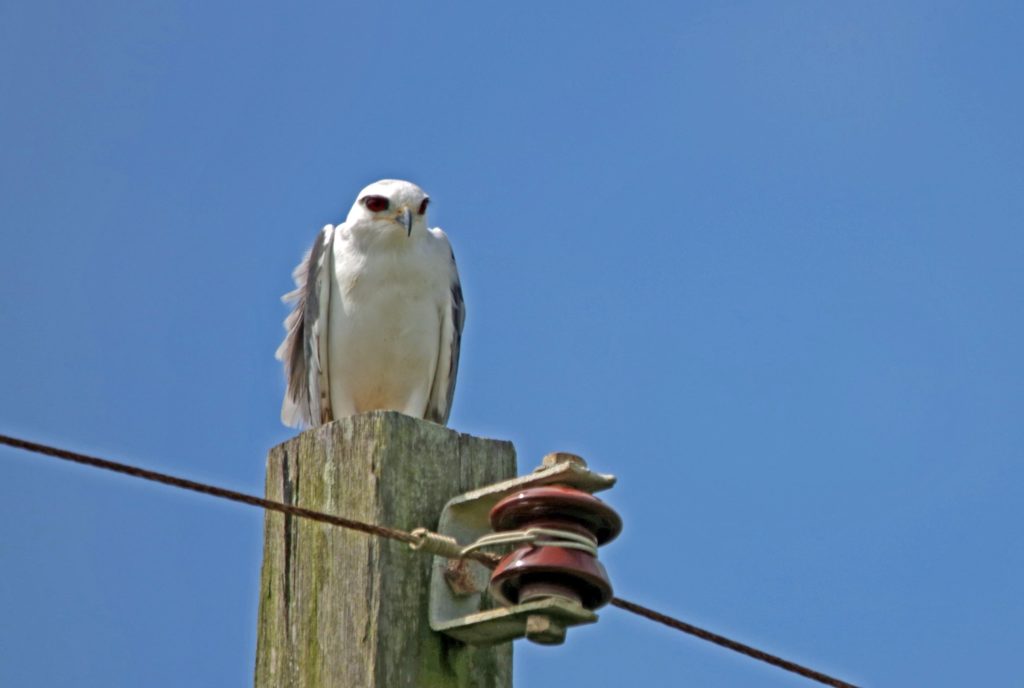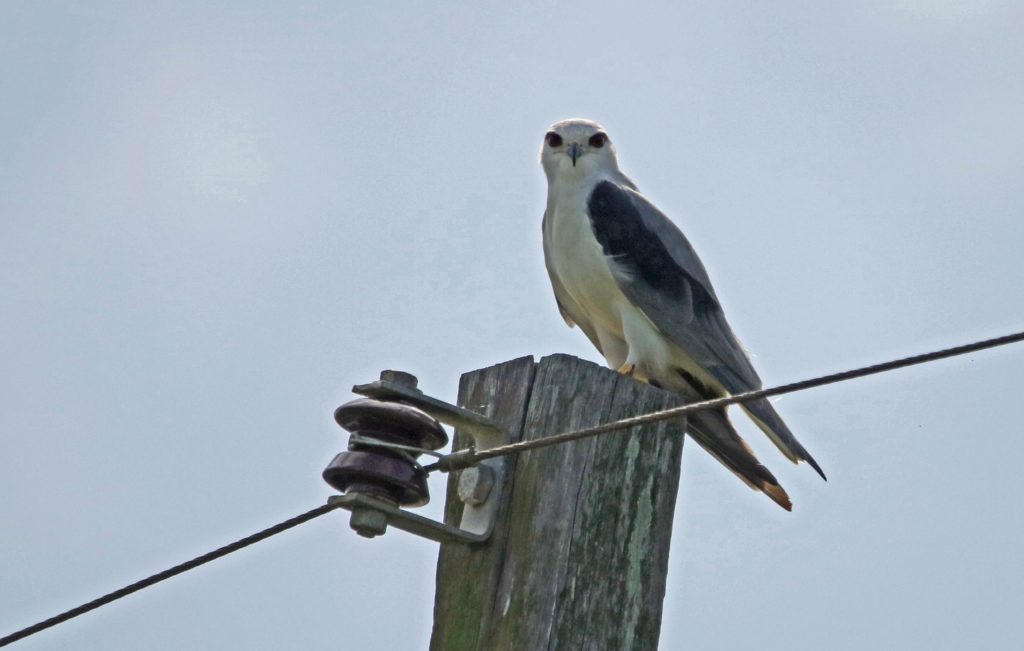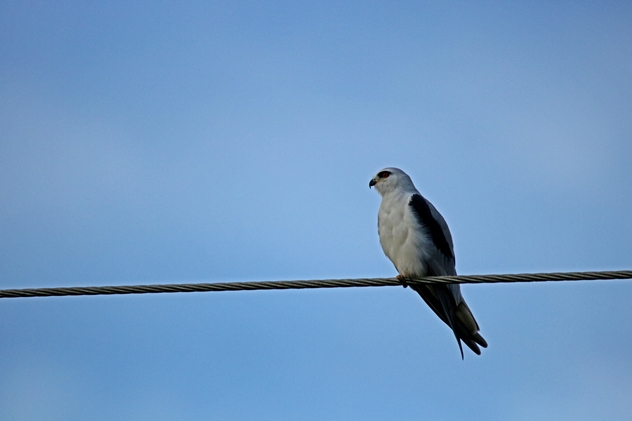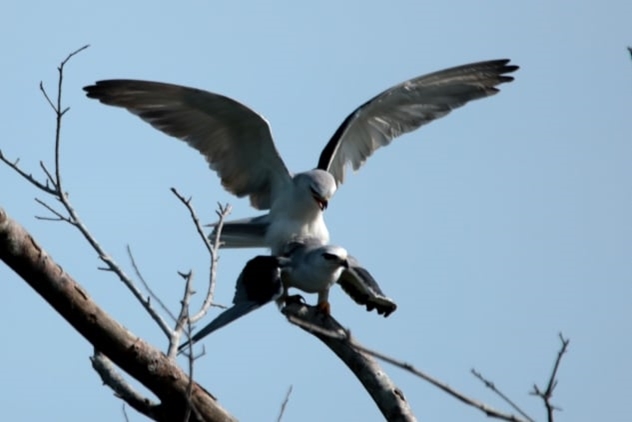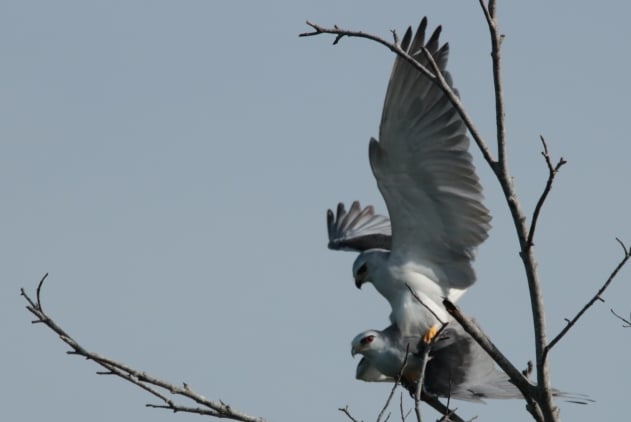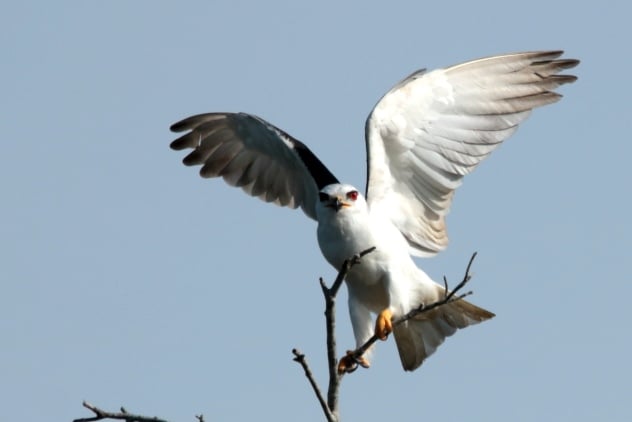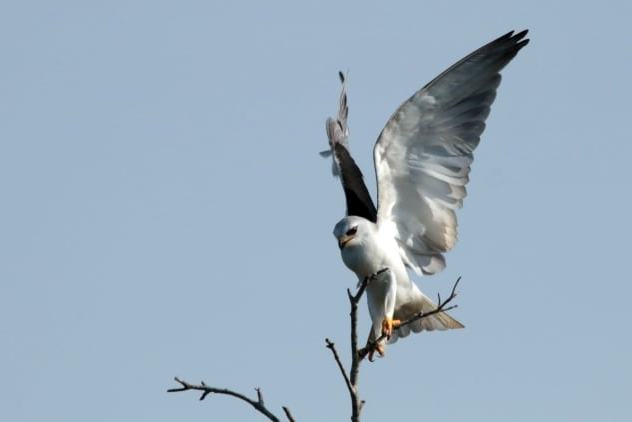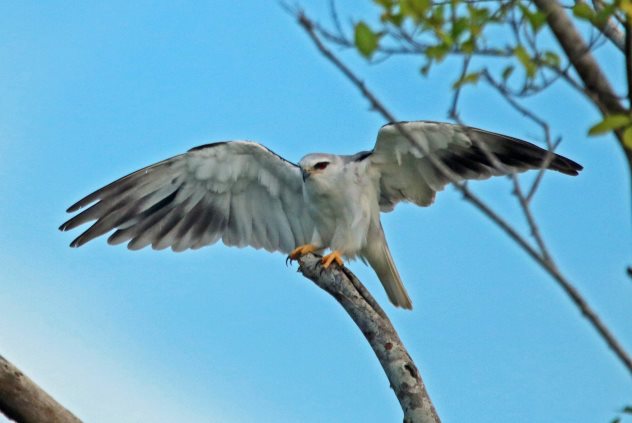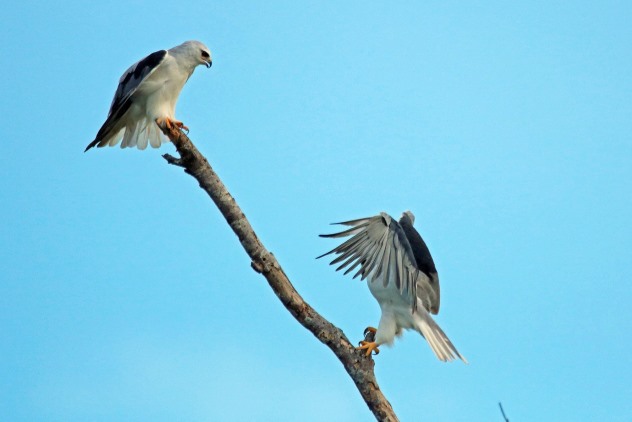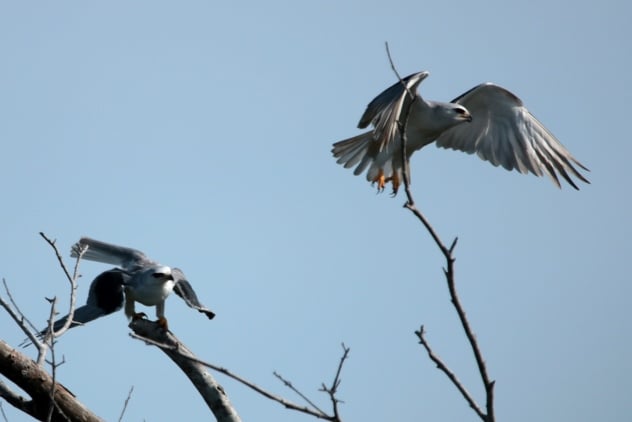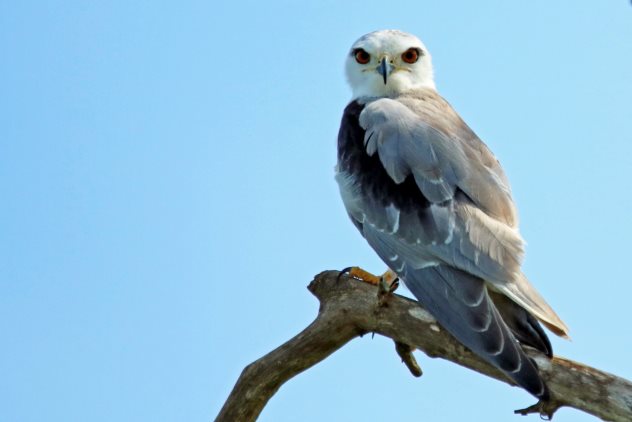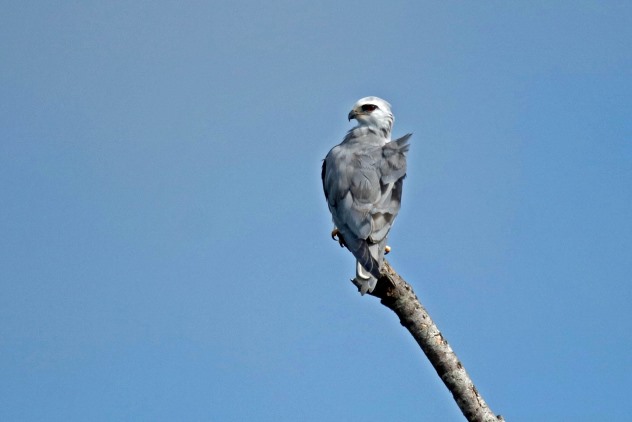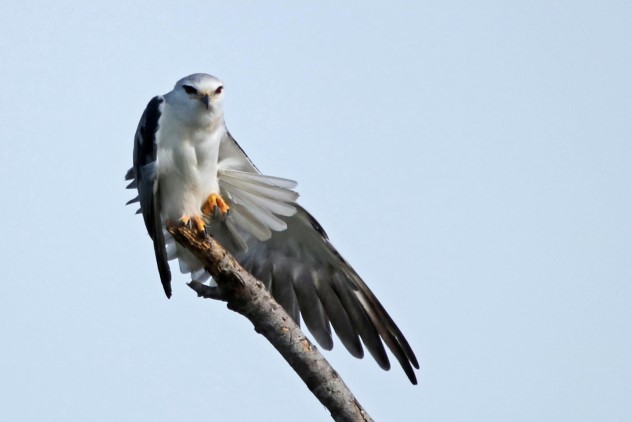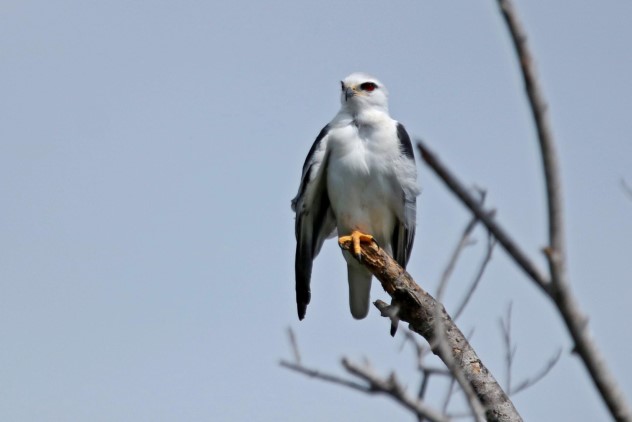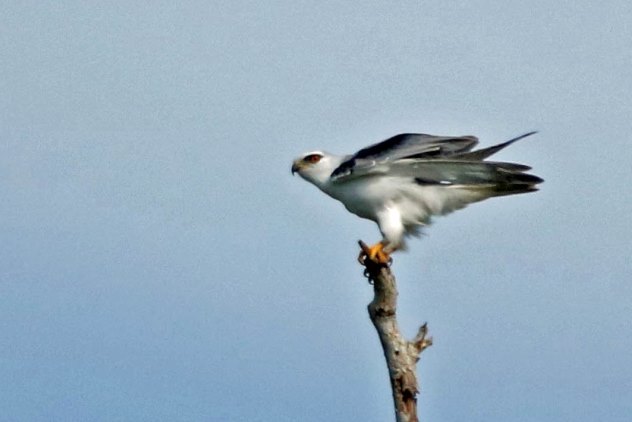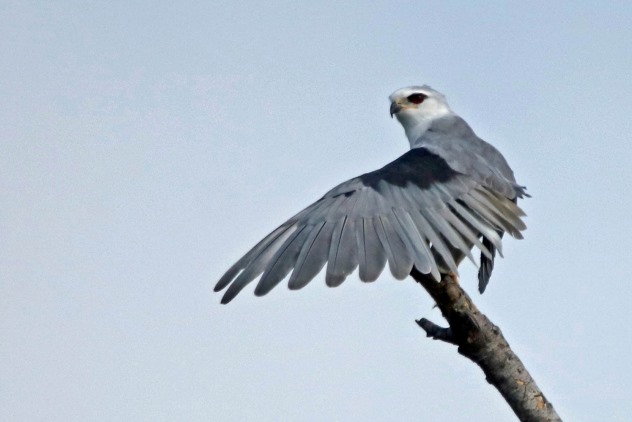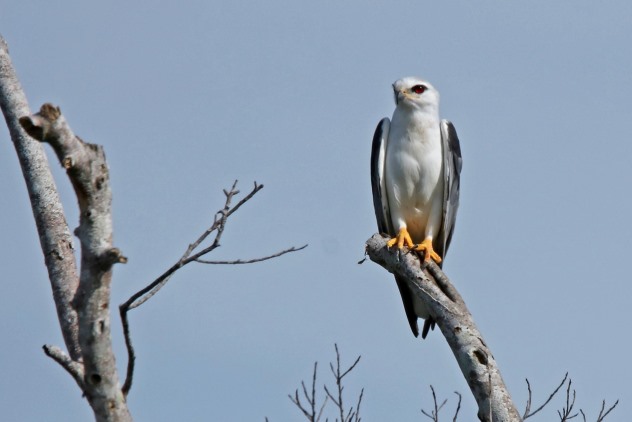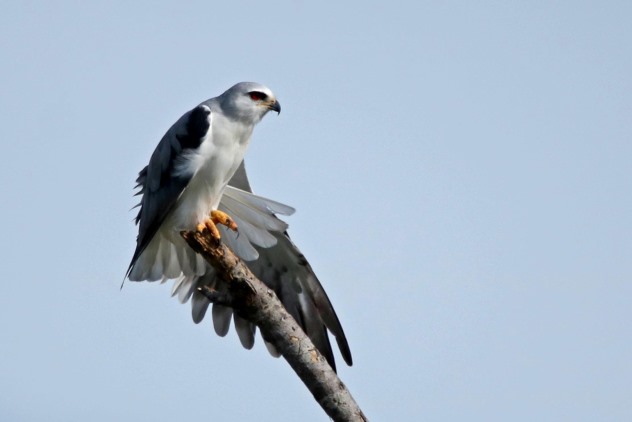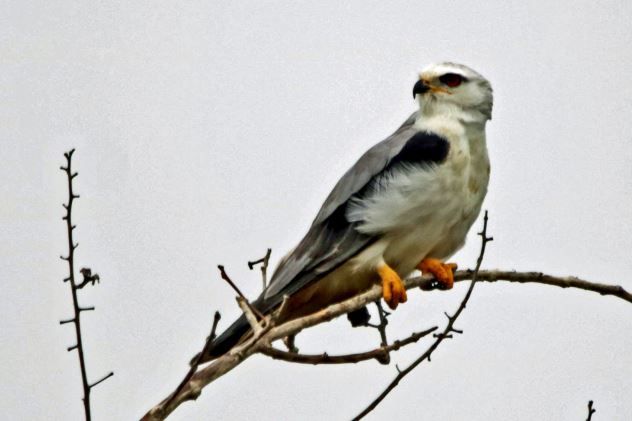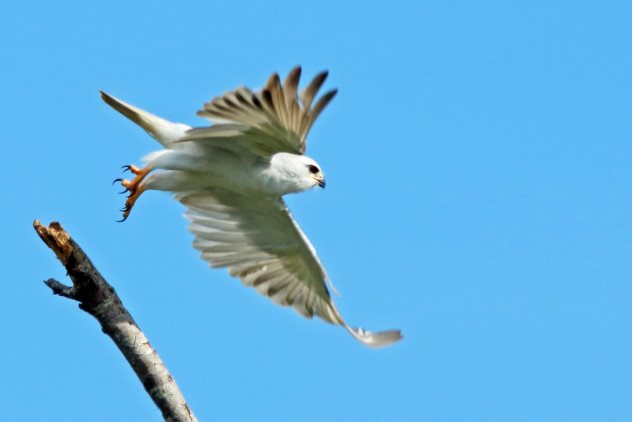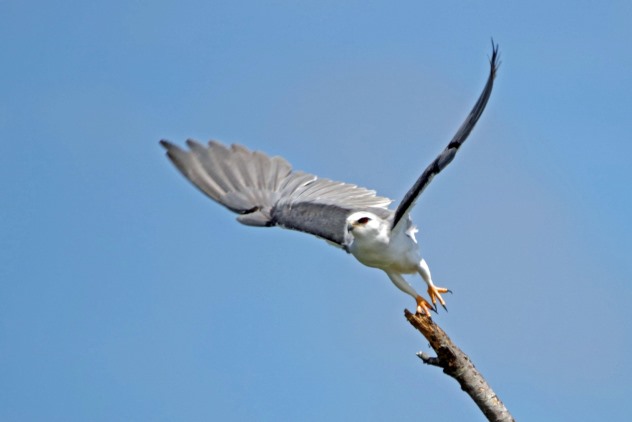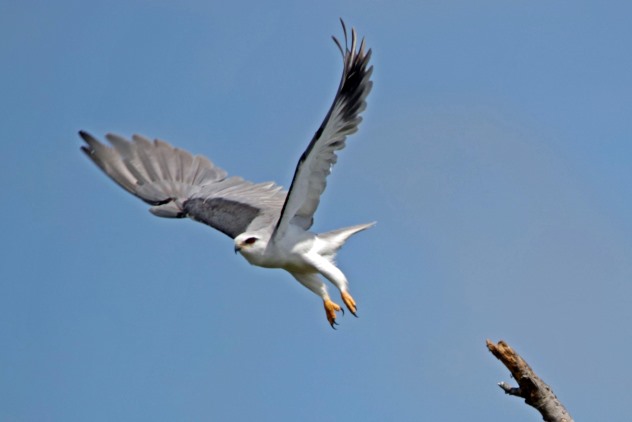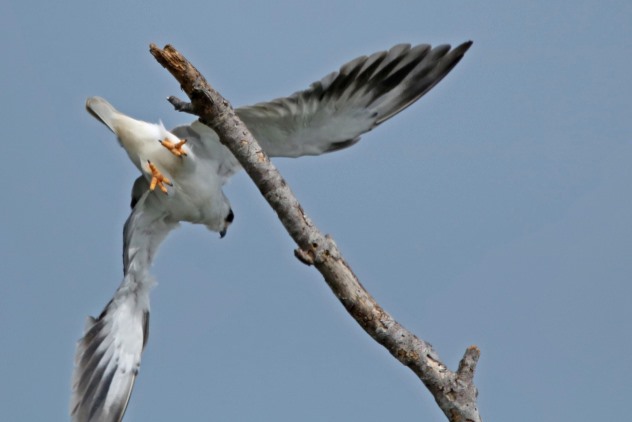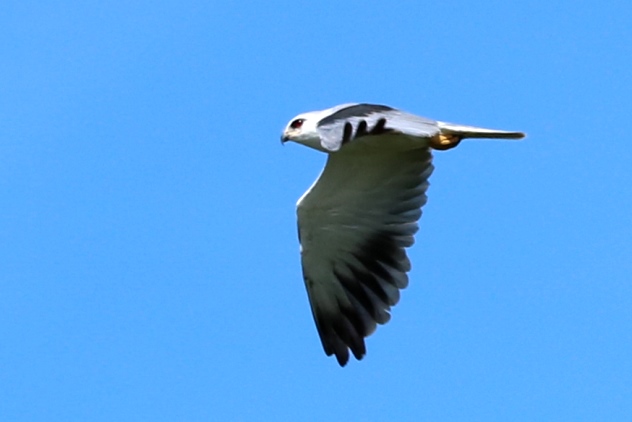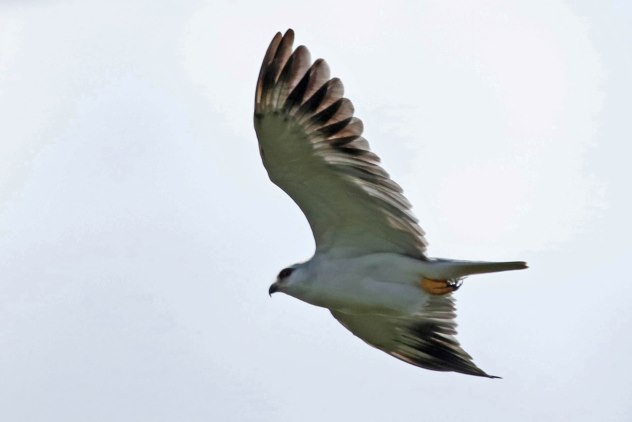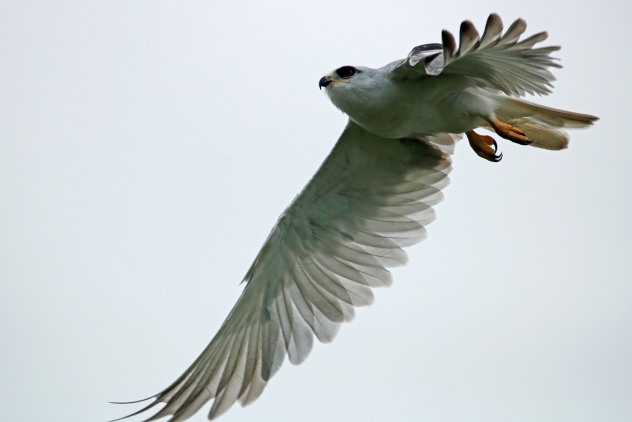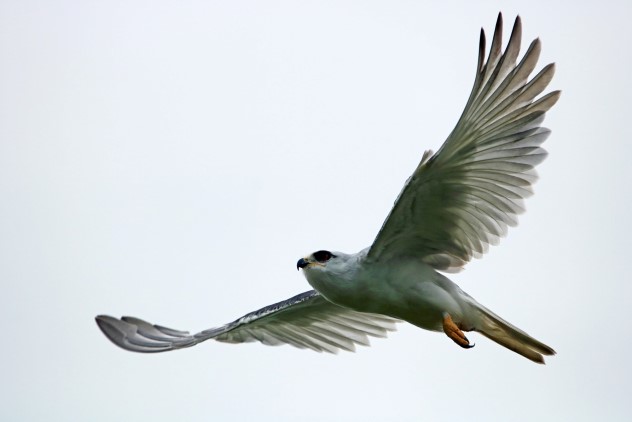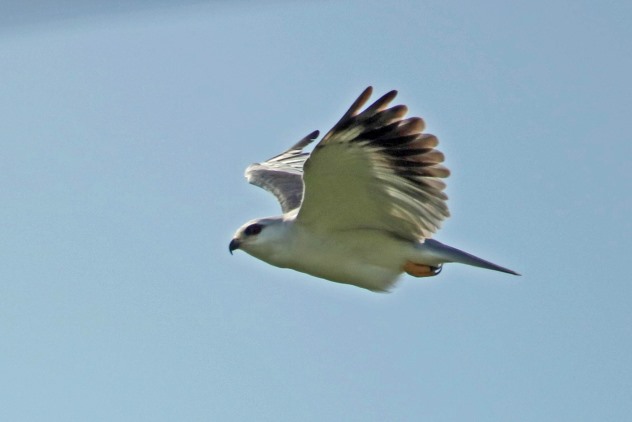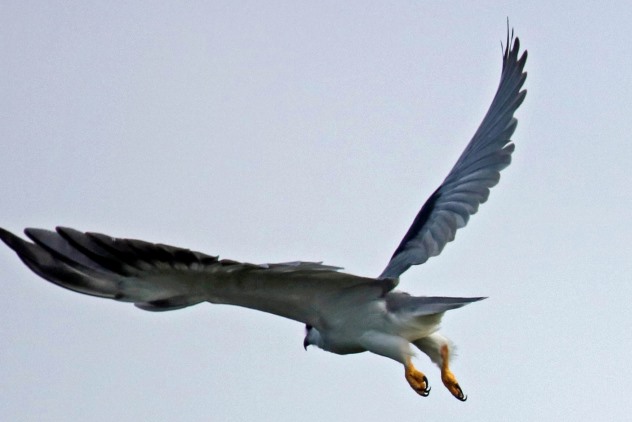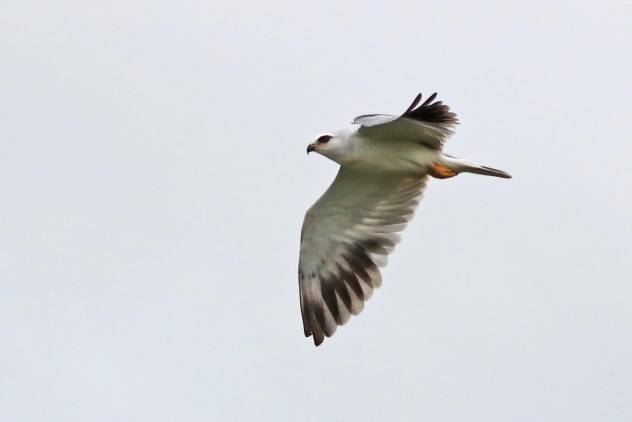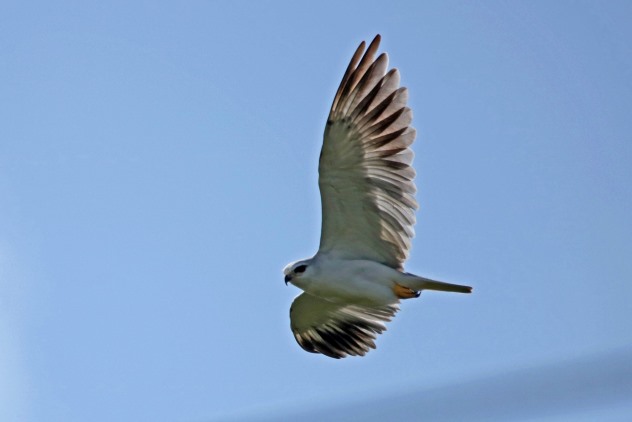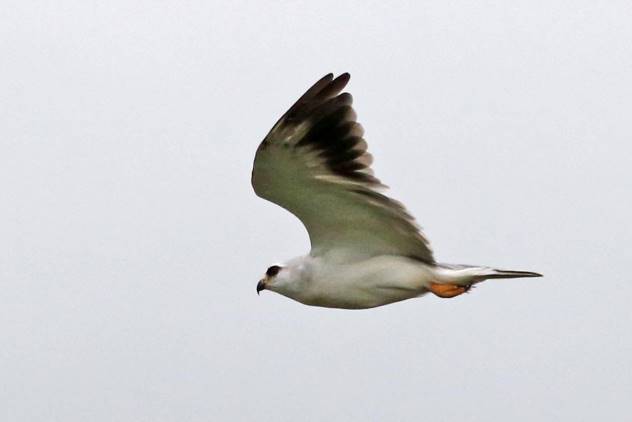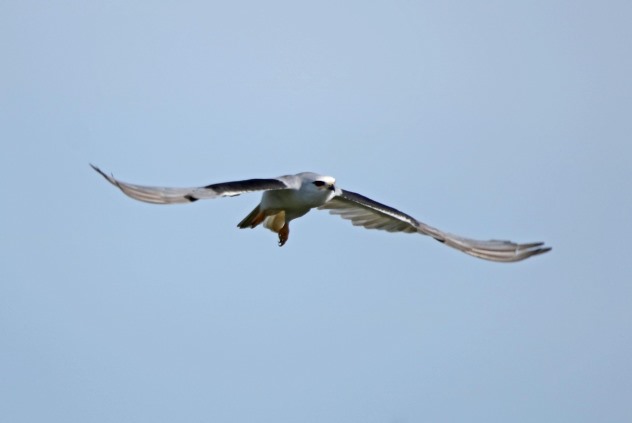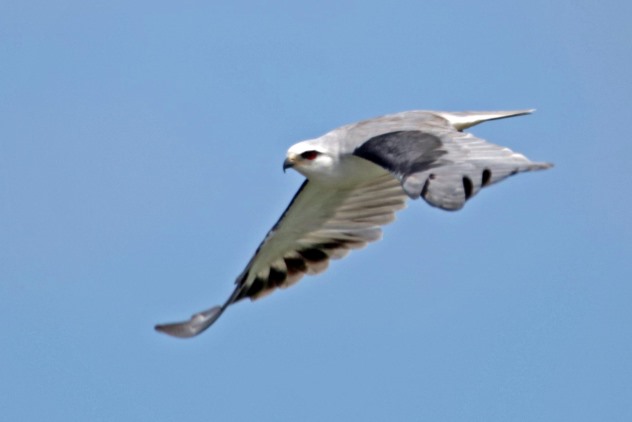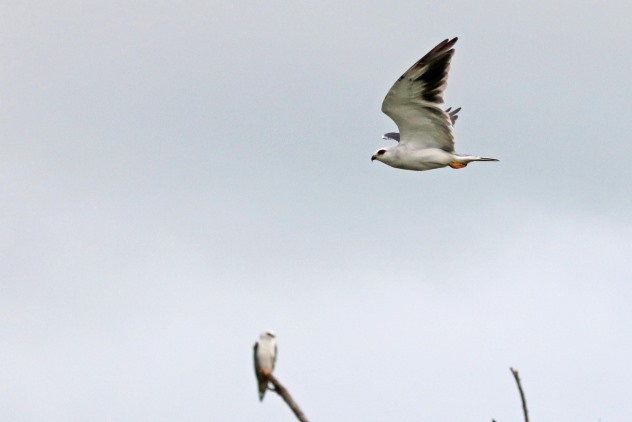The black-winged kite is an elegant, streamlined white, grey and black raptor with owl-like forward facing eyes. Also known as the black-shouldered kite, it has large eyes with blackish eye-patch, black bill and yellow legs and feet.
Once quite scarce in Borneo, it is now a common lowland resident throughout Borneo. It is the only kite that hovers like a kestrel. It often perches on bare branches and overhead power cables and pole.
Males establish territories and defend them from competition. Females move into the territories of males. Courtship is noisy and involves chases and once the pair is formed they copulate frequently. During courtship, the male will feed the female in mid-air: she will flip upside down and take food with her feet from his, while both are flying.
Both sexes build the nest though females spend more time on the nest construction. The nest is a large untidy shallow platform of twigs built on high tree or on an artificial structure such as a bridge or power pole. Usually 3 to 4 pale creamy eggs with spots of deep red are laid. Both parents incubate but when the chicks hatch, the male spends more time on foraging for food. Females initially feed the young, sometimes hunting close to the nest but will also receive food from the male. After fledging, the young birds continue to be dependent for food on the male parent for about 80 days, initially transferring food at perch and later in the air. Once breeding is complete females often move on to new territories sometimes deserting before the young fledge, leaving males to feed and raise the young. Both males and females show considerable nomadism. Unlike most birds of prey, they are capable of raising multiple broods in a year.
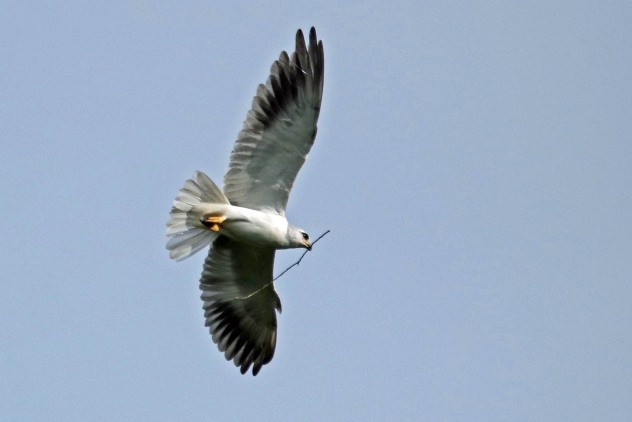
A black-shouldered kite with a twig for building nest seen in the vicinity of the Miri Sludge Treatment Plant
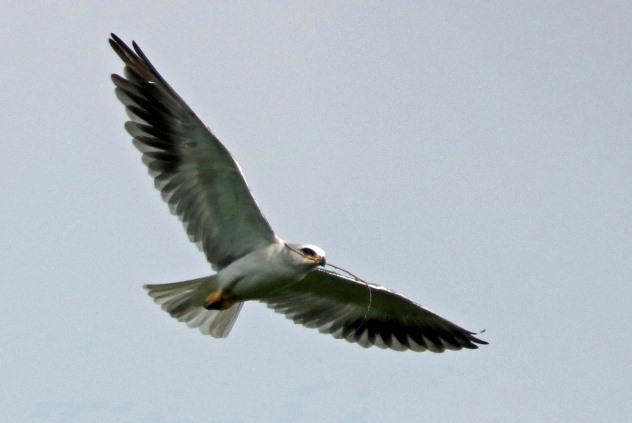
A black-shouldered with a twig for building nest seen in the vicinity of the Miri Sludge Treatment Plant
Their prey includes grasshoppers, crickets and other large insects, lizards, and rodents. Injured birds, small snakes and frogs have also been reported.The black-winged kite flies slowly during hunting like a harrier, but it will also hover like a kestrel. Perches are used for hunting and for feeding but large prey may sometimes be handled on the ground. They prefer to hunt during the day, particularly early morning and late afternoon.
I have encountered a few black-shouldered kites at Kuala Baram Wetlands on many times. It is at the wetlands that I managed to take lots of photos of these kites, even photos of them mating. I have also seen these kites occasionally in the vicinity of the Miri Sludge Treatment plant.
I love the sight of these kites in flight, especially when they take off from their perch. They look so majestic!
 CY@CY Says Welcome to my dreamscape. Where a Lim is also a Ling.
CY@CY Says Welcome to my dreamscape. Where a Lim is also a Ling.
